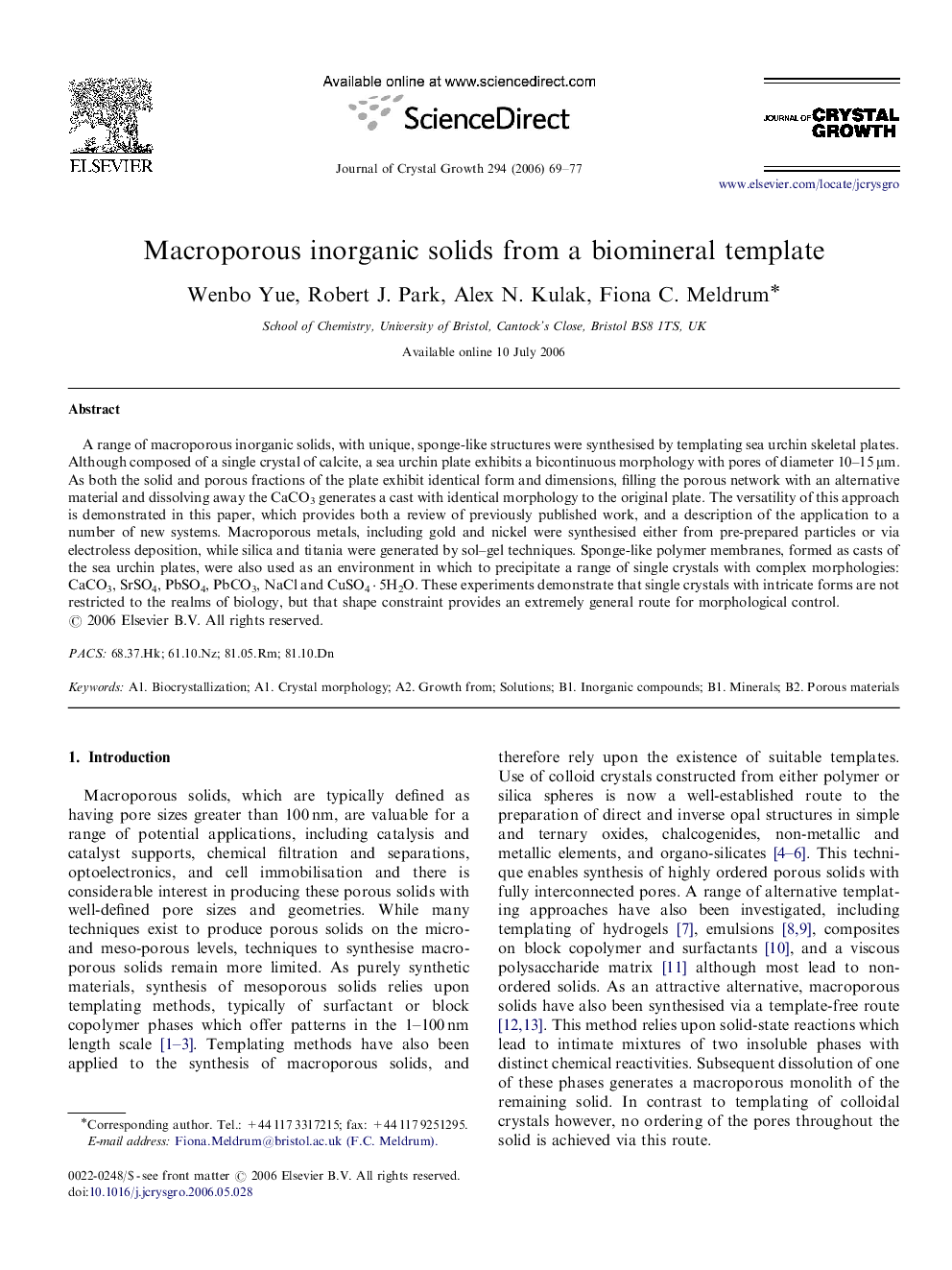| Article ID | Journal | Published Year | Pages | File Type |
|---|---|---|---|---|
| 1796489 | Journal of Crystal Growth | 2006 | 9 Pages |
A range of macroporous inorganic solids, with unique, sponge-like structures were synthesised by templating sea urchin skeletal plates. Although composed of a single crystal of calcite, a sea urchin plate exhibits a bicontinuous morphology with pores of diameter 10–15 μm. As both the solid and porous fractions of the plate exhibit identical form and dimensions, filling the porous network with an alternative material and dissolving away the CaCO3 generates a cast with identical morphology to the original plate. The versatility of this approach is demonstrated in this paper, which provides both a review of previously published work, and a description of the application to a number of new systems. Macroporous metals, including gold and nickel were synthesised either from pre-prepared particles or via electroless deposition, while silica and titania were generated by sol–gel techniques. Sponge-like polymer membranes, formed as casts of the sea urchin plates, were also used as an environment in which to precipitate a range of single crystals with complex morphologies: CaCO3, SrSO4, PbSO4, PbCO3, NaCl and CuSO4·5H2O. These experiments demonstrate that single crystals with intricate forms are not restricted to the realms of biology, but that shape constraint provides an extremely general route for morphological control.
